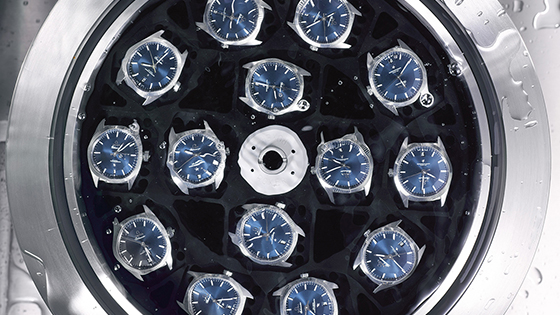
In 1848, when Louis Brandt created his very first watches, his ambition was to produce the most accurate movements possible. This quest for precision ultimately led to the 19-ligne “Omega” calibre in 1894, after which the brand was named. In 2015, the watchmaker took a new step forward by introducing Master Chronometer certification, symbolising the industry’s highest standards of precision, performance and magnetic resistance.
For the past ten years, watches bearing this certification are equipped with components and innovations guaranteeing advanced horological performance, from the Co-Axial escapement promoting long-lasting precision to the silicon Si14 balance-spring ensuring superior anti-magnetism.
To highlight these advantages, the brand worked with the Swiss Federal Institute of Metrology (METAS), known as Switzerland’s official and independent government authority on all issues related to measurement including measuring equipment and procedures.
Together, they devised Master Chronometer certification, in which all watches must pass additional tests, covering water resistance, power reserve, temperature fluctuation and exposure to magnetic fields of 15,000 gauss (a very important factor when considering the disruptive nature of modern-day magnetic items such as mobile phones, laptops, metal clasps on handbags, induction hobs and automatic doors).
Watches would be tested during ten days in six different positions and the accuracy criteria would range up to 0/+5 per day. The Omega Globemaster was the very first watch to attain Master Chronometer certification in 2015. Since then, there are over 2.5 million Omega watches that have earned the title “Co-Axial Master Chronometer”. This achievement has enabled the brand to extend the warranty on all its watches to five years, offering customers a distinctive long-term benefit.
Today, the Biel/Bienne-based company continues its pursuit of excellence. Most recently, the brand opened its Laboratoire de Précision, marking a new milestone in watchmaking quality control. Officially authorised by SAS (Swiss Accreditation Service) for chronometer testing, the laboratory also now includes Master Chronometer testing. The technologies developed in-house allow Omega to go far beyond current industry standards by measuring and evaluating every beat of its calibres.
The Laboratoire de Précision has become the first watchmaking lab to independently and neutrally integrate the two most prestigious certifications in mechanical watchmaking.
November 06, 2025


 News
News